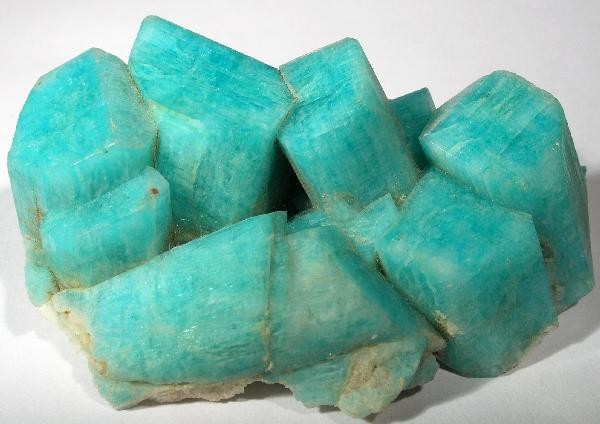Feldspar Group: Gemstone Information
Feldspar Group is the most abundant mineral group on Earth accounting for around 50–60% of the Earth’s crust, gem-quality feldspars are rather rare. Mineralogically, the group has been comprehensively studied. Consequently, numerous scientific terms have been coined to describe concepts, phases and features shown by the group. Feldspars show more types of phenomena than any other gem and naming may be difficult as some feldspars are not homogeneous. Many of the descriptive scientific terms used have little or no gemmological significance but in preparing full gemmological descriptions some may be appropriate and are applied here for clarity.
The feldspar group is also inundated with variety of names e.g. peristerite, moonstone, sunstone, amazonite, adventurine, perthite and spectrolite. Whilst the International Mineralogical Association Commission
on New Minerals and Mineral Names (IMA CNMMN) does not recognize or define varieties, within the gem trade variety names are frequently applied to feldspars that exhibit characteristic properties and/or color.
This is helpful where a particular optical property such as the ‘moonstone effect’ (schiller) is exhibited by heterogeneous feldspars that are not readily classified. Consequently, sunstone and moonstone are dealt with separately as effects and not specifically under species or intermediates. Some varieties have been characterized in the gemmological literature but often the gem trade assigns a variety name on the basis of its selling appeal, e.g. ‘rainbow moonstone’. In order to avoid confusion, it is helpful to link commercial names with correct mineralogical terminology.
The group comprises two closely related families that are allied in habit; however, the crystal symmetry is controlled by both the internal structural framework arising from aluminium–silicon ordering (distribution of atoms within the structure) and distortion arising from the effect of the variation in cation (sodium, calcium, potassium and barium) size. Temperature is an essential factor in determining the resultant species. The resultant properties are further affected by intimate lamination of differing species that arise during cooling. Zoning is common due to the changing chemical composition of the melt during the growth history. Thus chemistry, temperature and ordering/structure affect the properties that are measured ahead of naming a feldspar.
Chemical Composition and Nomenclature
Feldspar is the mineral name given to a group of aluminium silicate minerals whose general chemical formula is XAl(Al,Si)Si2O8, where X is potassium, sodium, calcium or barium. The majority of feldspars are classified chemically into alkali feldspars and plagioclase feldspars. The alkali feldspars range in composition from sodium bearing albite to potassium feldspar species and are identified on the basis of their composition, temperature of formation range, ensuing structure and properties. Application of International Mineralogical Association (IMA) nomenclature rules means that intermediates within the plagioclase series do not have species status. Intermediates were named for convenience.





